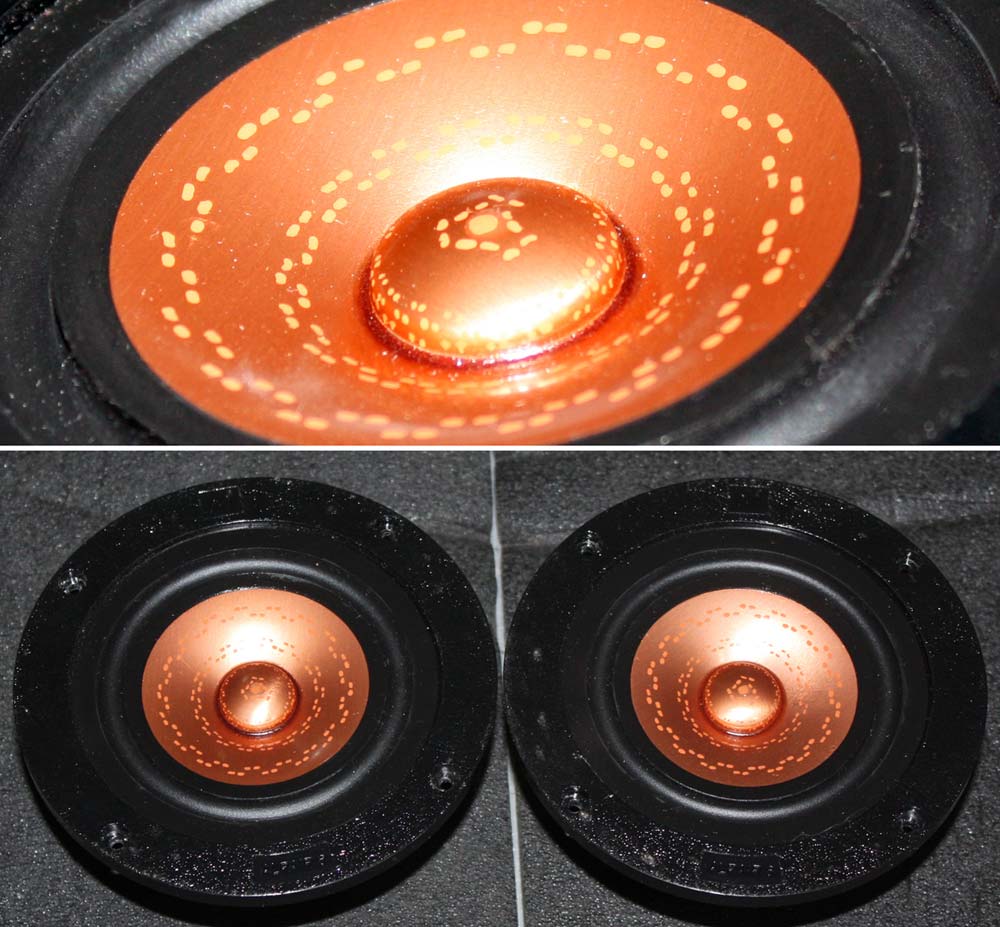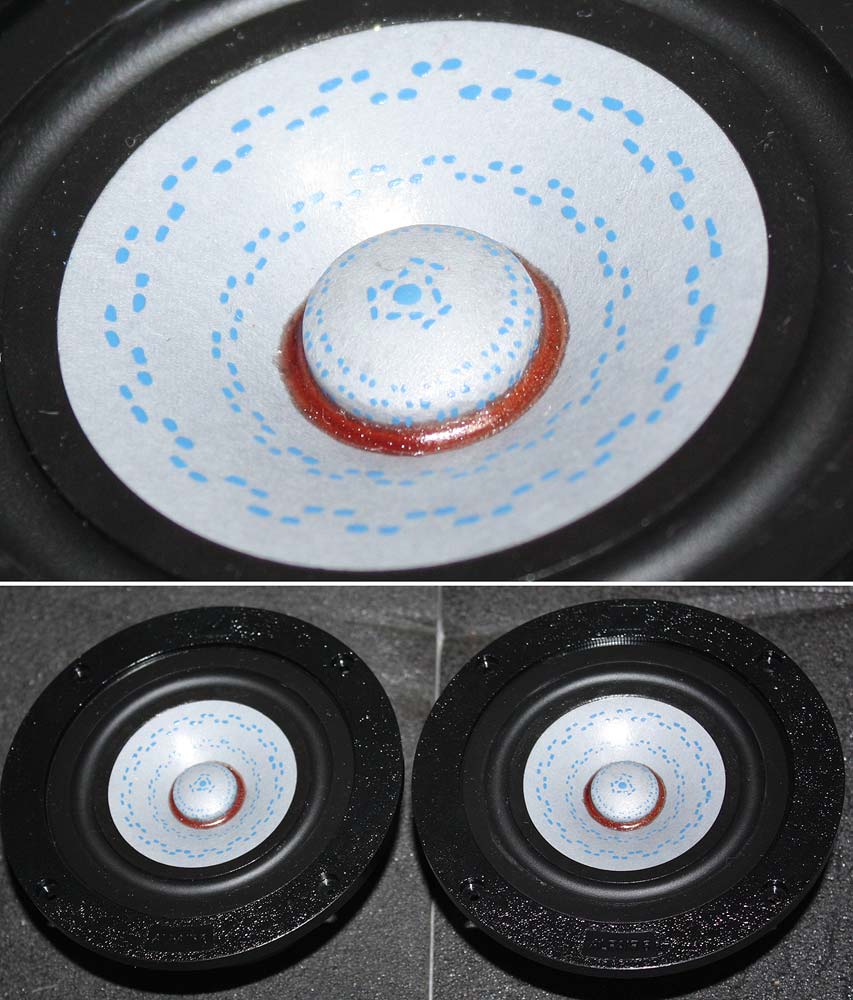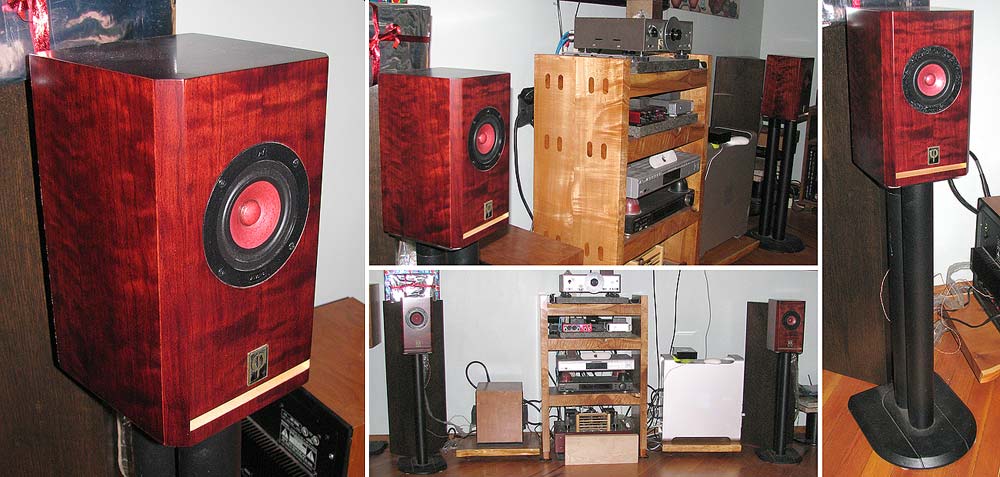Hello,
I was eyeballing something along the lines of the Fostex P1000 Back loaded horn from Madison Sound. I thought I would check here first to see what other options are. I have the tools to build my own cabinets, I would just need plans and driver recommendation. I will be using a DAC-Linestage of some sort (I've got 2 already build)-MC2505. This will be used in my office. I prefer bookshelf.
Thanks in advance.
I was eyeballing something along the lines of the Fostex P1000 Back loaded horn from Madison Sound. I thought I would check here first to see what other options are. I have the tools to build my own cabinets, I would just need plans and driver recommendation. I will be using a DAC-Linestage of some sort (I've got 2 already build)-MC2505. This will be used in my office. I prefer bookshelf.
Thanks in advance.
Bookshelf & (effective) BLH would seem to me to be a bit of an oxymoron. If you find that general size of enclosure and driver appealing for this particular application, I think you could do far better if a bit more depth of enclosure is possible. Start with a look at the Woden Baby Lab series - well proven designs for a wide range of drivers in this “weight class”. I built a few of them myself, and even though my sojourn down the primrose path of FR/ single systems started almost 20 years ago with antecedents of the current FE103, of the Fostex models taste tested to date, I tend to prefer the FF85 & 105WK over them.
There are of course other brands from which to prepare a short list - Mark Audio, ScanSpeak, Peerless, Dayton, etc.
Let the games begin...
There are of course other brands from which to prepare a short list - Mark Audio, ScanSpeak, Peerless, Dayton, etc.
Let the games begin...
Good point Chris on the BLH and DT.
The Baby Labs come to mind for cabinet designs with similar dimensions/proportions. There are also good options in the P10 Mar-Ken catalog.
The Baby Labs come to mind for cabinet designs with similar dimensions/proportions. There are also good options in the P10 Mar-Ken catalog.
I wasn't looking for a back loaded horn at the time, but came across it when I stumbled across their other FR speaker kits. I liked Madison Sound's price point for the FR bookshelf, then stumbled upon the back loaded version and thought, if I spend my $150 budget on drivers, then I could build some nice cabs. That being said, I am willing to look at more options for FR speakers. I am going to take a look at the Baby Labs design.
Folks, those plans are exactly why I came here. Thanks sharing..now to decide which driver, as they all seem to be available through Madison and at reasonable prices, which makes the decision harder. If anyone has recommendations of one over the other, I would like to hear your thoughts.
Couple questions if you dont mind. I noticed that you refer to these designs as T-line. Is that due to the expansion of the port vs a horn of some sort? I also noticed that these are rear ported vs front. What does one gain from that, (I assume better bass extension)? Any reason to go 3" over 4"? Thanks again folks.
Couple questions if you dont mind. I noticed that you refer to these designs as T-line. Is that due to the expansion of the port vs a horn of some sort? I also noticed that these are rear ported vs front. What does one gain from that, (I assume better bass extension)? Any reason to go 3" over 4"? Thanks again folks.
A horn is a pipe that expands toward the terminus. This one has so little expansion & the terminus is so undersized relative to the axial QW length that it simply acts as a resonant pipe across its passband and is never impedance matched in its operating BW.
There is no 'port' in the labyrinths or the P1000. There is a line terminus; not quite the same thing. I generally prefer (I design the labyrinths in question) rear termini for a variety of reasons; reduced construction complexity, slightly superior coupling to boundaries and it also helps suppress any unwanted midband leakage.
As far as drivers go, depends what you like. The FF85wk is a nice little unit, as are the Alpairs. There is no fixed answer to this unfortunately.
There is no 'port' in the labyrinths or the P1000. There is a line terminus; not quite the same thing. I generally prefer (I design the labyrinths in question) rear termini for a variety of reasons; reduced construction complexity, slightly superior coupling to boundaries and it also helps suppress any unwanted midband leakage.
As far as drivers go, depends what you like. The FF85wk is a nice little unit, as are the Alpairs. There is no fixed answer to this unfortunately.
Thinking back to all the Baby Labs i have drawn for Scott, i think i would first look at the Alpair 6.2p (or the metal version if you want more top).
FF85/105wk are also good.
dave
FF85/105wk are also good.
dave
The 6P was a nice little unit. Sadly, it's had its encounter with Madame Guillotine, and is no longer with us. AFAIK it just wasn't economical to produce for the quantities sold. The 6M is often overlooked but worth considering also.
Duder - at the risk my assuming that you’re at the early stages of research and analysis of the numerous enclosure types that might suit your application, don’t reach the conclusion that the manifold design of the Baby Labs series, or similar compact enclosures is solely for the purpose of shortening the height of enclosure, or that driver placement is irrelevant.
If you’re looking for specific recommendations for drivers, it’s no secret I’m a big fan of the FF85WK or Alpair6.2 paper for very near-field use (i.e. sitting either side of computer screen & listening usually well less than 1 meter).For further distances I’d suggest the FF105WK, or Alpair7.3, or 7ms, or Pluvia 7. Dave and Scott have probably dozens of enclosure designs to chose from for this short list of drivers -which can vary in size and build complexity somewhat.
Gentlemen, start your engines...
If you’re looking for specific recommendations for drivers, it’s no secret I’m a big fan of the FF85WK or Alpair6.2 paper for very near-field use (i.e. sitting either side of computer screen & listening usually well less than 1 meter).For further distances I’d suggest the FF105WK, or Alpair7.3, or 7ms, or Pluvia 7. Dave and Scott have probably dozens of enclosure designs to chose from for this short list of drivers -which can vary in size and build complexity somewhat.
Gentlemen, start your engines...
I have some stock of each, but they will only be available EnABLed.
Currently i have A6.2MeN in my 2.5 litre dual-purpose (fits both metal & paper drivers w no changes) in my portale briefcase system. Better bass than the much larger Fostex “horns”.
dave
Currently i have A6.2MeN in my 2.5 litre dual-purpose (fits both metal & paper drivers w no changes) in my portale briefcase system. Better bass than the much larger Fostex “horns”.
dave
I have some stock of each, but they will only be available EnABLed.
What does "available EnABLed" mean?
Guys you are awesome,
What does one get from sound when dealing with either a paper or metal. For someone reason, I feel I would get a smoother less harsh sound from paper.
What does "available EnABLed" mean?
A (controversial) modification to a driver, amounst other things, improves the DDR (Downward Dynamic Range/ability to reproduce very smal details)
EnABL - Listening impressions & techniques (lots more threads to)
A6.2MeN:

Stock A6.2PeN:

Here A6.2PeN in mMar-Ken6p in red (box a little smaller than the babyLab — somewhere i do have pictures of the Stinger we built):

I feel I would get a smoother less harsh sound from paper.
In the case of the A6.2m/p the metal is smooth enuff, but the paper has a very smooth very nice, what i call vintage top-end.
dave
Historically, all drivers are doped to a greater or lesser extent, either as part of the molding process and/or afterwards, so depends on how it's doped, i.e. the manufacturer decides, though some DIYers want something different, but be forewarned, tweaking a really wide BW metal cone is a good way to turn it into a mid-bass or even just a bass driver if no experience.
Subtle response changes like EnABLed gives anyone with a steady hand considerable leeway compared to using Dammar, shellac, latex paints like me and others have done to dope whole areas like a manufacturer does is a different story.
Anyway, can't comment on current 'FR' drivers, just in general that metal tends to be intentionally 'brighter', so for some is too 'bright', needing some form of 'toning down' [must have flat - recessed in the ~ 4 - 9 kHz sibilance BW depending on 'brightness' due to strong tinnitus in my case regardless of diaphragm material].
In short, if the published responses aren't too smoothed, compare from 1 Khz - up [tinny] and especially from 4 kHz - up to see where a driver 'shines' and for a variety of reasons don't be surprised if some paper drivers 'outshines' metal [Lowther being a 'ringing' example].
GM
Subtle response changes like EnABLed gives anyone with a steady hand considerable leeway compared to using Dammar, shellac, latex paints like me and others have done to dope whole areas like a manufacturer does is a different story.
Anyway, can't comment on current 'FR' drivers, just in general that metal tends to be intentionally 'brighter', so for some is too 'bright', needing some form of 'toning down' [must have flat - recessed in the ~ 4 - 9 kHz sibilance BW depending on 'brightness' due to strong tinnitus in my case regardless of diaphragm material].
In short, if the published responses aren't too smoothed, compare from 1 Khz - up [tinny] and especially from 4 kHz - up to see where a driver 'shines' and for a variety of reasons don't be surprised if some paper drivers 'outshines' metal [Lowther being a 'ringing' example].
GM
Well, I guess I can choose said driver in paper, build a cab that handles both paper and metal and try them both. But for now, i am thinking paper.
I have the fostex ff85 in the lances (baby lab line). They are awesome. Feels like you can reach out and touch the music right in front of your face.
Good point Chris on the BLH and DT.
There are also good options in the P10 Mar-Ken catalog.
My first thought was the Mar-Ken 10.3 with the metal 10M's from Madisound. At $85 per driver they would be slightly over budget, but seem to offer more potential for bass than the smaller Baby Lab's. Dave or Scottmoose, how does the sound of the Mar-Ken and Baby Lab's designs compare?
Drivers are not really directly comparable, althou A6.2m sounds an aweful lot like an A10.3 with no bass.
dave
dave
Is the Pluvia Seven HD the same as the non HD? They offer a paper cone version. Its either that one, Aplair 6m, or Fostex FF105WK in paper.
No. P7HD is supposed to be an evolution of the Alpair 7.3. The P7 is more like a next gen CHR (but way better). Voicing very much like the A7 but without the level of DDR.
dave
dave
- Home
- Loudspeakers
- Full Range
- Back loaded horn plans